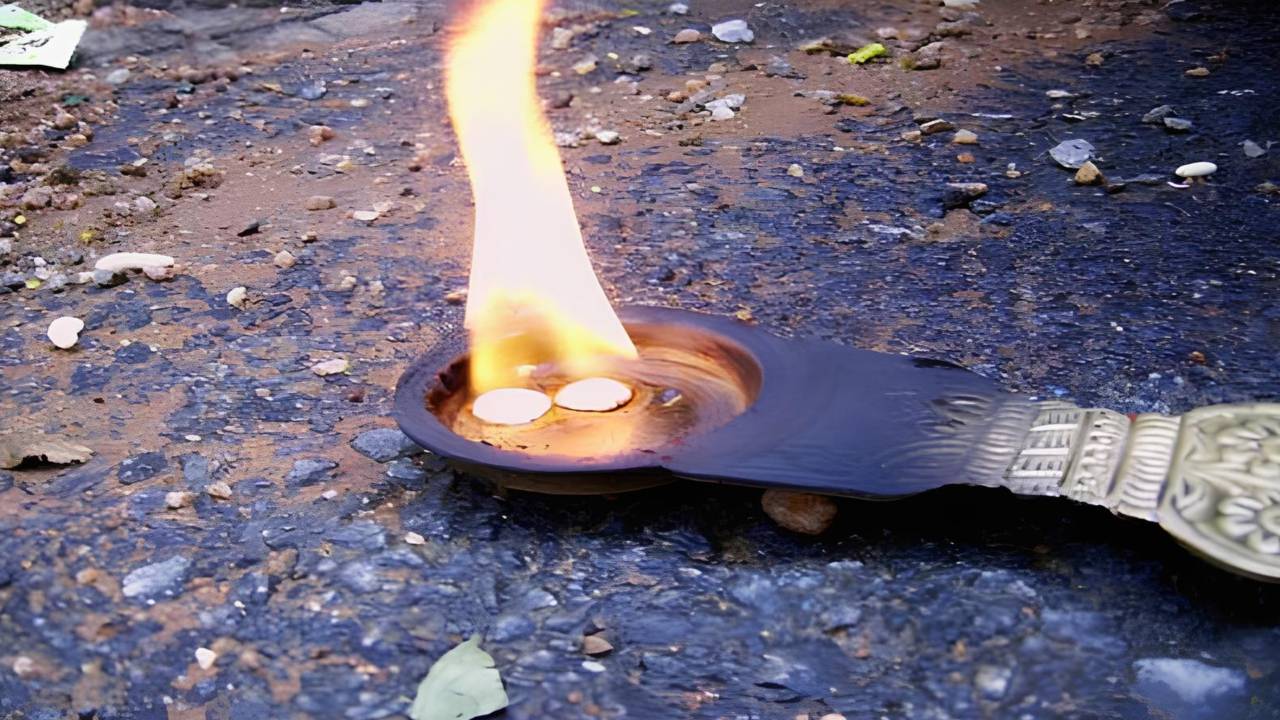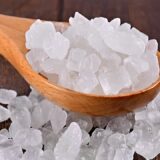Bhimseni Camphor: Its Varieties Uses and Benefits for Health
Camphor, also known as Kapur or Kapoor, is a white, waxy solid with a firm, crystalline texture and a strong, distinctive fragrance. It is extracted from the leaves and bark of the camphor tree and is chemically classified as an isoprenoid with the formula C₁₀H₁₆O.
The camphor tree, scientifically named Cinnamomum camphora, is a large evergreen that can reach heights of 50 to 100 feet. Its branches spread out widely, giving the tree a broad appearance rather than a tall one. The bark is rough and pale, with vertical fissures. It bears clusters of small, black, berry-like fruits, each about 1 cm in diameter.
This evergreen tree thrives in tropical and subtropical regions, including Asia, Japan, Indonesia, Vietnam, and Taiwan. It is believed to be native to the southern part of China, particularly around the Yangtze River, and has been introduced to many other parts of the world.
Camphor Names In Other Languages
- Hindi: Karpur
- English: Camphor tree/Camphor laurel
- Kannada: Pache karpoora
- Telugu: Karpooram Chettu
- Tamil: Karpooram /Pachai Karpooram
- Marathi: Karpur
- Gujarati: Karpur
- Bengali: Karpur
Ayurvedic Properties of Camphor
Camphor, known as Cinnamomum camphora, has several notable Ayurvedic properties:
Rasa (Taste): Camphor has a complex taste profile, including Tikta (bitter), Katu (pungent), and Madhura (sweet). This combination affects its impact on the body in various ways.
Guna (Qualities):
- Laghu (Light): Camphor is considered light and easy to digest.
- Rooksha (Dry): It has a drying effect, which is useful for balancing excess moisture or Kapha dosha in the body.
- Vipaka (Post-Digestive Effect): After digestion, camphor primarily exhibits a pungent taste, which can contribute to its warming and stimulating effects in the body.
- Veerya (Potency): Camphor has a Sheeta (cooling) effect, which can help to soothe and reduce inflammation.
- Effect on Tridosha: Camphor helps to balance both Kapha and Pitta doshas. Its properties make it effective in reducing excess moisture, congestion, and inflammation associated with these doshas.
In summary, camphor’s unique combination of tastes, qualities, and effects makes it a valuable substance in Ayurveda, particularly for its ability to balance doshas and provide cooling relief.
7 Different Types of Kapoor
Explore the benefits of Bhimseni Kapoor (Camphor) – a revered Ayurvedic herb with diverse medicinal uses. Learn about its various types and how each can contribute to wellness, comfort, and holistic health.
1. Natural Camphor (Cinnamomum camphora)
Natural camphor is extracted from the wood and bark of the camphor tree (Cinnamomum camphora), native to Asia. The extraction process typically involves steam distillation, resulting in white, crystalline granules or blocks.
This camphor has a strong, distinctive odor and is valued for its use in religious rituals, traditional medicine, and as a natural insect repellent. It is also used in aromatherapy for its calming and antiseptic properties.
2. Synthetic Camphor
Synthetic camphor is manufactured through chemical processes, primarily from turpentine oil or other petrochemical sources. It is often used as a cost-effective alternative to natural camphor.
This type is produced in a controlled environment to ensure consistent purity and quality. Synthetic camphor is commonly used in pharmaceuticals, over-the-counter medications, and personal care products such as ointments, creams, and cosmetics.
- Forms: Solid crystals or powders.
- Uses: Used in pharmaceuticals, cosmetics, and as a solvent.
3. Borneol Camphor
Borneol camphor is derived from the essential oil of the Borneol tree (Dryobalanops aromatica), found in Southeast Asia. It is chemically similar to camphor but has a distinct aroma and slightly different properties.
Borneol camphor is used in traditional medicine, particularly in Chinese and Ayurvedic practices, for its purported therapeutic benefits, including its anti-inflammatory and analgesic effects. It is also used in perfumery due to its pleasant scent.
- Forms: Solid or in essential oil form.
- Uses: Common in traditional medicine, especially in Chinese medicine, and used in perfumery.
4. Kapoor (Gum)
Kapoor gum, also referred to as camphor gum or resin, is a natural gum obtained from various trees and plants. This type of camphor is often used in incense sticks, traditional rituals, and for its aromatic qualities.
The gum is typically collected from tree bark and then processed into granules or powder. It has a strong, lingering fragrance and is used in spiritual and cultural practices, particularly in South Asia.
- Forms: Typically found in granules or powdered form.
- Uses: Used in incense, traditional medicine, and as an aromatic additive.
5. Chinese Camphor (White Camphor)
Chinese camphor, often called white camphor, is obtained from the camphor tree (Cinnamomum camphora) primarily found in China. This type is known for its purity and strong, characteristic smell.
It is widely used in Chinese medicine for its anti-inflammatory, analgesic, and expectorant properties. White camphor is also used in topical treatments for muscle pain, respiratory issues, and in vapor rubs.
- Forms: Crystals or powder.
- Uses: Used in medicinal and therapeutic applications, including as a cough suppressant and in topical analgesics.
6. Indian Camphor
Indian camphor, similar to Chinese camphor, is sourced from camphor trees in India. It is typically processed into white crystals or blocks and has applications in both religious and medicinal contexts.
In India, it is used in various rituals and ceremonies due to its purifying and calming effects. It is also utilized in traditional medicine for its antiseptic and anti-inflammatory properties.
- Forms: Usually available as crystals or blocks.
- Uses: Commonly used in religious ceremonies, traditional medicine, and as a flavoring agent.
7. Natural vs. Refined Camphor
Natural camphor is extracted directly from the camphor tree, preserving its traditional properties and uses. Refined camphor, on the other hand, undergoes additional processing to remove impurities and enhance its quality.
This refined version is used in a variety of specialized applications, including pharmaceuticals, where high purity is required. The refining process ensures a consistent and high-quality product suitable for medicinal and industrial uses.
- Natural Camphor: Extracted from the camphor tree and used in its pure form.
- Refined Camphor: Undergoes further processing to remove impurities and enhance its purity for specific uses.
What Is Bhimseni Kapoor?
Bhimseni Kapoor is a significant variety of camphor with a long history of use in Ayurvedic medicine and religious rituals (puja). It is renowned for its unique properties and traditional importance.
- Alternate Names: Known by several names, including Malay camphor, Sumatran camphor, Borneo camphor, and Barus camphor.
- Physical Characteristics: It is denser and heavier compared to other camphor types, causing it to sink in water more readily than Chinese camphor.
- Botanical Source: Bhimseni Kapoor is naturally produced in the stems of the Dryobalanops tree. This tree has approximately seven subfamily species and is found in clusters within the tropical forests of Sumatra, Peninsular Malaysia, Borneo, and West Malesia.
Bhimseni Kapoor Uses
Benefits Of Burning Bhimseni Kapoor
Burning Bhimseni Kapoor holds significant meaning and offers various benefits, deeply rooted in tradition and spirituality. Here’s a detailed look at its advantages:
Spiritual Significance
- Destruction of Illusion and Ego: The complete combustion of camphor symbolizes the burning away of ego and worldly illusions. This act represents the purification of the self and the merging with divine knowledge, leaving no residue, akin to attaining spiritual enlightenment.
- Divine Connection: Lighting camphor before God during rituals signifies a purification process that helps in connecting with the divine, reinforcing the principle of true knowledge and spiritual awakening.
Daily Rituals and Purification
- Air Purification: Camphor is regularly used in Hindu households to light diyas during daily prayers. The burning camphor purifies the surrounding air, helping to eliminate harmful bacteria, viruses, and mosquitoes, creating a healthier environment.
- Medicinal Benefits: Camphor’s medicinal properties help in safeguarding against various illnesses by killing bacteria prevalent in warm climates. When burned, it releases beneficial compounds into the atmosphere, which can be absorbed by those present.
Ayurvedic Benefits
- Atmospheric Purification: According to Ayurveda, burning camphor purifies the atmosphere, contributing to a cleaner and more serene environment. The practice of placing palms over the Aarti plate and then bringing them to the nose and eyes allows devotees to absorb the medicinal benefits of camphor.
Symbolic Meaning in Aarti
- Transience of Life: In Hindu mythology, the fleeting nature of camphor during Aarti symbolizes the short span of human life and the ephemeral nature of physical pleasures. It serves as a reminder of the impermanence of worldly attachments and the pursuit of eternal spiritual truth.
- Focus on the Divine: The brief existence of camphor in Aarti encourages devotees to transcend material concerns and focus on discovering God, emphasizing the importance of spiritual growth and divine connection.
Burning Bhimseni Kapoor, thus, is not only a practice rich in spiritual and cultural significance but also a beneficial ritual that enhances both the physical and spiritual well-being of individuals.
11 Benefits of Bhimseni Kapoor
Camphor is also a popular component in many over-the-counter products, including cough syrups, anti-itch creams, and muscle rubs, highlighting its effectiveness in treating a range of ailments.


























thanks for this good article
Thanks for the information.
Karpuura-Gauram Karunna-Avataaram
Samsaara-Saaram Bhujage[a-I]ndra-Haaram |
Sadaa-Vasantam Hrdaya-Aravinde
Bhavam Bhavaanii-Sahitam Namaami ||
Meaning:
1: Pure White like Camphor, an Incarnation of Compassion,
2: The Essence of Worldly Existence, Whose Garland is the King of Serpents,
3: Always Dwelling inside the Lotus of the Heart.
4: I Bow to Shiva and Shakti Together.
I have been eating kafoor since a week to stop my bleeding piles. Pls help.
Given below two ayurvedic methods are very effective…give it a try take 1/4th spoon of anantamool(Indian sarsaparilla)powder + 1 spoon of ghee early morning on empty stomach. if bleeding is acute take it 3 times a day.
(or)
Anantmool is available at amazon.in …
Hope it gives relief to you. Sarve Jana Sukhina Bhavantu ! /\
treatment of piles has two parts: A. give up use of food contains: meat (buffalo, beef), eggs, red+black pepper, brinjal, garam masala. And should use: vegetables, salad, (Fiber containing foods). B. taking medicines.
for bloody piles, use following medicines:
Habbe bawasir khooni 2 tablets bed time
Qurs-e Gulnar 1 tablet motning time
Qurs-e Mulayyen (if constipation is there) 2 tables bed time
use Habbe Muqil if the stool is hard instead of Qurs-e Mulayyen 2 pills
I m 23 weeks pregnant and I m accidentally eaten pooja kapoor like a sugar seed.is it harmful for my baby womb.I m so tensed
Thanks for sharing this amazing article. Camphor’s anti-bacterial,anti-fungal properties were very well understood during Vedic times. Hence it is suggested to used oils infused with camphor to treat skin diseases and also burning camphor during Aarti during rituals and every evening to keep the mosquitos and harmful pathogens away.
How to identify the “other” variety of camphor that you mentioned has Tarak properties? Are these the synthetic ones made from turpentine? Is it not advised to use this to light ?